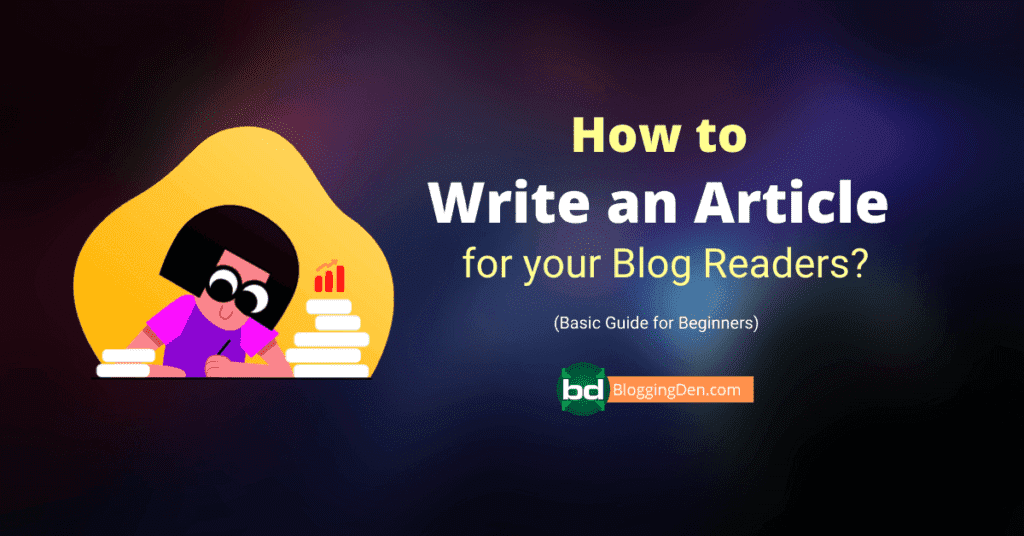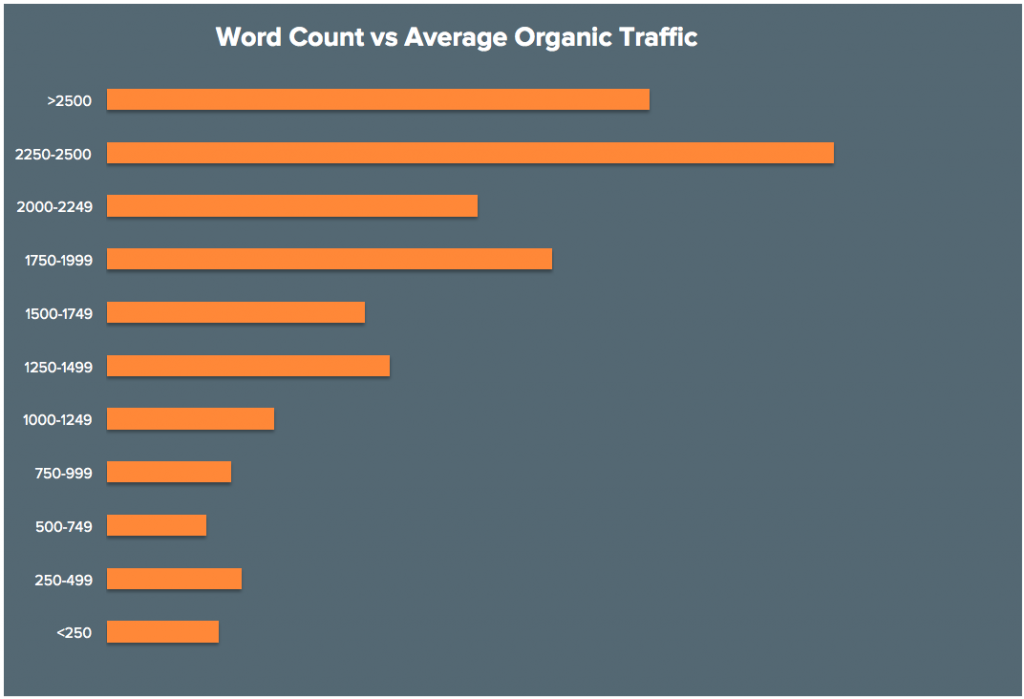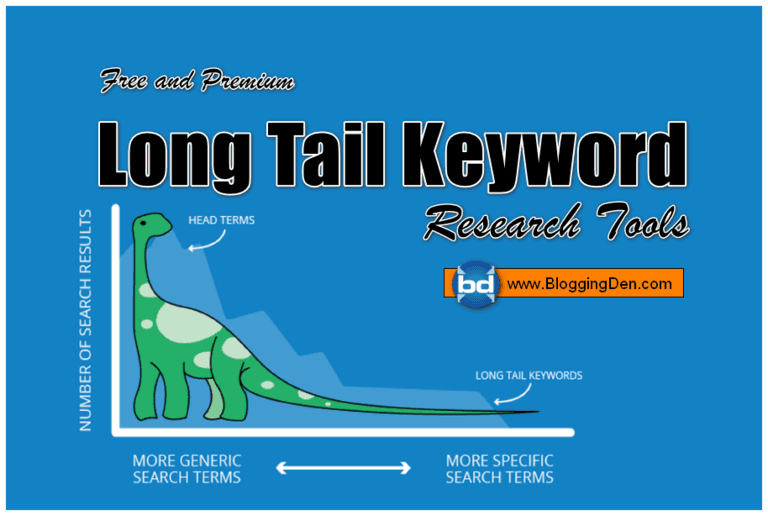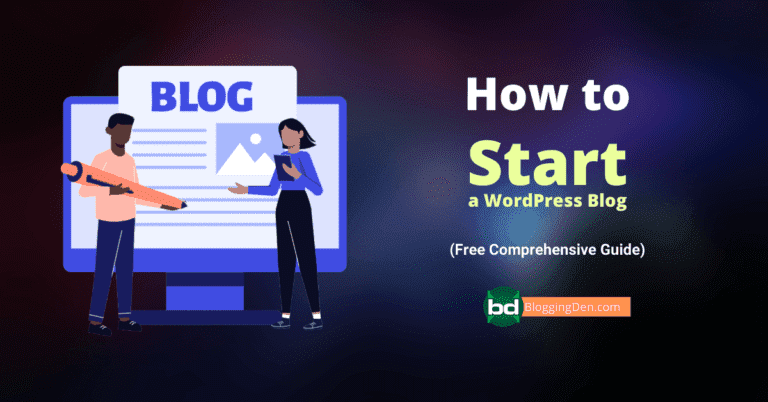Writing a compelling blog post is an art that requires thoughtful planning and meticulous execution. Before you even begin drafting, spend time researching your topic and brainstorming key points you want to cover. Outline the structure of your post to create a logical flow of information.
As you write each section, focus on providing unique insights and actionable advice that will resonate with your target audience. Bring your ideas to life through vivid examples, statistics, quotes, and anecdotes. Use headings and subheadings to break up the text and highlight important topics.
Refine your work through multiple rounds of rigorous editing. Check for clarity, consistency, and concision. Tighten up sentences for maximum impact. Read every word aloud to catch awkward phrasing. Leverage online tools like the Hemingway App to assess readability.
Creating visually appealing posts is also key. Break up the text with relevant images, charts, or videos. Optimize images with descriptive alt text. Include internal links to related content. Check the formatting on various devices. Before hitting publish, have a friend proofread to catch any lingering errors.
With thoughtful topic research, tight writing, and sleek formatting, you can craft blog posts that captivate audiences and boost your brand’s expertise. The extra effort is well worth it to publish content you can truly be proud of.
Most content creators follow the most effective writing methods for better productivity. Remember that your readers are interested in something other than the content when you write an article. They want to be entertained, informed, and engaged. So, when you write an article for your blog readers, keep these points in mind:
- Include a powerful headline with a compelling call to action
- You can create exciting subheadings that make it easier for your readers.
- Write in short paragraphs for easy reading and comprehension.
Let’s take a quick look at these crucial points.
Table of Contents
How to write a blog post?

If you are writing your first blog post, you want to cover what people are searching for. We are trying to cover the maximum number of tips on writing effective blog posts. First, you need to understand the type of blog post people are searching for to know the details. Once you collect and cover your blog to grab your readers’ attention, the post becomes an amazing blog post.
Writing a great blog post is a challenging task. There are a few fundamental options for finding quality content for your blog.
Choosing a well-known topic helps you write more, and you must follow the article writing format.
The first option is to find a topic for great content from other sources. You can do this by searching for keywords on Google, reading popular blog posts, or perusing the most recent news articles. To write a good blog post that people are searching for more of, you must know how to write like a pro.
To do this, you need to cover on your blog everything about the chosen search intent. This post will help you learn the basic tips for writing quality blog posts.
1. Choose the Best Topic

The procedure’s first step is to develop topics for your blog posts.
They must select the topic for your blog before you can brainstorm. Any blog topic generator tool (SEMrush) can produce fresh ideas for blog articles.
- You can choose a subject from your list of potential writing ideas immediately.
- Before starting article writing, understand how to plan and structure a piece.
- If not, choose a topic for your post by browsing other blogs or the most recent news, trends, etc.
- To come up with topic ideas for your blog in 2024 and beyond, you can go to the following sites:
Quora: Quora is one of the most used platforms, with millions of users. If you haven’t done so, sign up for a Quora account immediately. You can find a wide range of topic ideas on Quora. It also offers writing help for your answers, allowing you to include links to your blog posts to increase traffic to your website. Quora provides an excellent opportunity for beginners and seasoned professionals to gain valuable peer feedback. Whether you’re writing about a hobby or a professional topic, taking advantage of Q&A sites can significantly improve the quality of your content. You can follow my profile on Quora and subscribe to my space for more updates on blogging-related topics.
Buzzsumo: Buzzsumo uses a unique social network analysis of content to help users. It uncovers the hottest topics on the web and predicts which ones will go viral. Before writing a post, we use Buzzsumo. It makes it simple to find the most famous content across all industries. You can see the popularity of topics you want to write about as well as tweets and social media shares. BuzzSumo is an excellent tool for determining whether you should optimize your site for SEO. At the same time, it won’t tell you exactly why you ranked well. It gives you valuable insight into the traffic to your pages and where to get the most views.
2. Do keyword research

Use keyword research to find at least one key idea that you can include in your blog posts. You can use programs like SEMrush to conduct keyword research for your blog posts. I used the most popular SEO tool, SEMrush, to write all of my articles for this blog. This tool helped me make every piece of content a perfect blog post.
I wrote every blog post on this site using SEMrush because it provides fantastic data, such as:
- Research information about the competition, including their estimated website traffic,
- Keyword research
- Backlink analysis
- Domain comparison
- Discover the website’s traffic.
- Ideas for conducting content research
Here is an excellent guide on how to conduct keyword research using SEMrush. Be sure to understand the significance of using long-tail keywords.
SEMRush helps you analyze keywords related to any website (or domain) using its advanced algorithms that search through billions of data points collected from millions of websites.
The tool provides insights into search engine optimization (SEO), social media marketing, link building, backlink analysis, keyword research, content creation, website usability, and conversion rate. The tool helps you find keywords with high traffic, backlinks, site speed, bounce rates, etc.

To start working with this tool, you need a SEMrush account to do keyword research if you don’t have one. You can use this unique link to get a 14-day free trial of an SEMrush Pro account, which is $199.
After you finish your keyword research, we can use your primary keyword in your title, meta description, image alt tags, and other places.
How can I improve the SEO of the content on my blog?
If you are using WordPress, consider installing the Rank Math SEO plugin. It makes optimizing your content for search engines straightforward.
You should write your blog posts before they are optimized for search engines. They prove these extra SEO tips to be effective.
- All external links should have the nofollow attribute. It is a good SEO practice to add rel=”nofollow” to all external links on your website, including affiliate links.
- Every image you include in your posts should have an alt tag.
- As website speed is now a significant Google ranking factor, make sure your site loads more.
- To decrease your loading times, switch to a quicker host, create caching plugins for WordPress like W3 Total Cache or WP Super Cache, and use a CDN.
- Before uploading images to your site, reduce their size to save more bandwidth.
3. Write an Outline

Outlining your content is necessary before you even begin writing your blog posts. Outlining your content enables you to produce even longer forms of content.
When writing good content for your blog, you should be completely clear on the subject. It helps you share your ideas and insights with other readers.
Writing skills come in handy. No matter what kind of writing you do, from personal essays to blog posts and articles, these are excellent ways to communicate your thoughts and feelings to others.
To create an outline, you can use the Scalenut or Frase outline generators or Surfer SEO outline generator tools. I am using the WriterZen SEO tool to create an outline and content and optimize it. If you want to know more details about this process, you can read my WriterZen review.
A content outline should always be used because
- Subheadings
- Bullet points or adding numbers
- Images
- Reference links, and so on.
Pro tip: To write blog posts and create an outline, we always use Google Docs. It enables you to save your data while offline or during an unexpected Wi-Fi outage.
4: Start writing

It’s time to write after you’ve finished choosing your topic and outlining your article. Finding the right time when you can write without interruptions is always preferable.
Using the Pomodoro technique, which entails working for 25 minutes and then taking a 5-minute break, you can write uninterruptedly as an alternative.
Article writers that can produce high-quality material in a short amount of time are in high demand in the internet age.
Don’t be an editor when writing blog posts; be a writer. When creating blog posts, be a writer and avoid attempting to be an editor.
Avoid writing from the WordPress dashboard as well, because doing so saves multiple blog post revisions each time you save as a draft, which slows down the overall loading time of your website because it takes up more space on your servers and databases.
SEMrush has a great feature to write and optimize content instantly while writing. The features are an SEO content template and an SEO writing assistant. You can check for more details about this SEMrush SEO writing assistant in my SEMrush Review part.
5. Identify your target audience
To write an effective and engaging article for your target audience, you must first consider the reader’s perspective. A SWOT analysis can help you identify which audiences would be interested in hearing what you have to say.

Looking for an audience interested in your product is essential, so look at demographic data such as age, income, location, and education. This information can help you target those who are most likely to benefit from your product.
What is SWOT analysis?
SWOT analysis is a strategic planning tool that helps businesses and individuals evaluate their strengths, weaknesses, opportunities, and threats.
- By understanding these factors, you can identify areas for potential improvement and capitalize on opportunities to increase your chances of success.
- When it comes to writing articles for a blog, SWOT analysis can be used to evaluate the topic and target audience of the article, as well as the blog’s overall performance and competition in the market.
- By identifying strengths, weaknesses, opportunities, and threats related to the topic and audience, you can create a more effective and engaging article that stands out from the competition.
- Additionally, by analyzing the blog’s strengths, weaknesses, opportunities, and threats, you can make strategic decisions about content, marketing, and overall strategy to increase your chances of success.
6. Write and edit articles as a professional

Get rid of any unnecessary words quickly. We try to make the content “tight” by cutting 200–300 words for every 1000 words we write.
The key in this situation is to avoid writing lengthy pieces of content and focus instead on using only what is necessary.
Divide long paragraphs into short ones. To make your content more accessible for readers to digest, you can split long sentences into two and break up long paragraphs into two or three lines.
As a general rule, edit your content so that even a fifth-grade student can understand what it is about.
While direct-response copywriters may sell to many individuals at once, they need to be there to answer queries. When you’re in person or on the phone, you may answer questions as they arise. Salespeople have an advantage over copywriters.

You can use SEMrush’s SEO Writing Assistant tool to make your content well-optimized for both humans and search engines.
Use active voice while writing the content, rather than passive voice.
How much time does it take to write a typical blog post?
Writing a blog post typically takes 4 hours and 1 minute.
It was one question that Orbit Media asked when polling over 1,000 bloggers.
We discovered that the average in the first year was roughly 2.5 hours, but that time increased over the subsequent years.
Orbit Media’s survey yielded several significant findings, including:
- Writing a blog post typically takes 4 hours and 1 minute.
- Bloggers took 67% longer in 2021 to complete a typical blog post than in 2014.
- Bloggers now spend an average of six hours on a post, which is twice as much as before.
- Three years ago, 1 in 20 bloggers worked on a typical blog post for over 6 hours.
- That percentage is now 1 in 8.
The results of their survey show bloggers are now spending more time and effort creating new content than they were in the past.
Writing articles for publications in print or online will bring in most of your income as a beginning freelance writer.
You can use any of the SEO content optimization tools to make your content more search-engine-friendly.
What are the tips for writing great blog posts?
To write an awesome blog post, first, sit down to write an introduction and create an outline for everything you need to write your post.
a. Write an Eye-Catching Title
Writing a good title is the first step to understanding the content. The title plays a crucial role when writing an article for a blog. After all, the title will hook readers and entice them to keep reading.
- Keep it short and sweet: An effective title should be short, concise, and to the point. Avoid using lengthy and convoluted phrases.
- Use keywords: Incorporate relevant keywords into the title to make it more discoverable by search engines and readers.
- Create a sense of curiosity: Use intriguing and thought-provoking language to entice readers to click and read your article.
- Use strong action verbs: Use strong action verbs such as “Discover,” “Unlock,” or “Transform” to make your title more engaging.
- Be specific: Be specific about the topic of your article in the title. This makes it clear to readers what they can expect to read about.
- Use numbers: Titles with numbers are more likely to be clicked, as they give readers a clear idea of what to expect and make the content look more structured.
A compelling title is crucial for drawing readers to your blog post. By keeping it short, incorporating keywords, creating a sense of curiosity, using strong action verbs, being specific, and using numbers, you can make your title eye-catching and increase the chances of readers clicking on your post.
You can write the best title possible by using the advice in this article, and you’ll also make sure that your article receives the attention it deserves.
b. Start writing the best content
If you want to write the best content for your blog, there are a few things you should keep in mind. When crafting the best blog posts, it would be best if you keep a few things in mind.
- Identify your target audience: Understand who your target audience is and what they want in your content. Tailor your writing style and tone to match their preferences.
- Use an engaging introduction: The introduction is the first thing that readers will see, so make sure it is compelling and grabs their attention.
- Use examples and stories: Use real-life examples and stories to make your content more relatable and engaging.
- Please keep it simple and easy to understand: Use simple language and avoid jargon or technical terms that may confuse your readers.
- Use visual aids: Use images, videos, and infographics to break up text and make your content visually appealing.
- Use internal and external links: Use internal and external links to provide readers with more information and increase the credibility of your content.
- Conclusion: Sum up the article’s main points and provide readers with a call to action.
In conclusion, starting to write the best content means identifying your target audience, using an engaging introduction, using examples and stories, keeping it simple and easy to understand, using visual aids, using internal and external links, and creating a conclusion with a call to action. Following these steps, you can create high-quality content that will engage and inform your readers.
c. Make the content grammatically error-free
When writing blog posts, there are a few steps you can take to ensure your grammar and spelling are impeccable.
- Use grammar-checking tools: Utilize grammar-checking tools such as Grammarly or Hemingway to ensure that your content is free of grammatical errors. These tools can help you catch mistakes you may need to detect, such as punctuation errors or incorrect verb tenses.
- Proofread multiple times: Proofreading your content multiple times is essential for catching grammatical errors. It recommends proofreading your content after writing and then again after a few hours, or even the next day, to ensure that you are getting all the correct errors.
- Get a second opinion: Ask a friend or colleague to read through your content and give feedback. Having another set of eyes on your content can help catch any grammatical errors you may have missed.
- Watch for common mistakes: Be aware of common grammatical errors such as homophones (words that sound the same but have different meanings and spellings) and subject-verb agreement.
- Use proper formatting: Proper formatting, such as correct punctuation and capitalization, can help make your content more readable and error-free.
Ensuring that your content is grammatically error-free is crucial for maintaining the credibility and professionalism of your blog. Utilizing grammar-checking tools, proofreading multiple times, getting a second opinion, being aware of common mistakes, and using proper formatting can help to ensure that your content is error-free.
As a result, businesses get a better ROI and market less content to their prospects. It will help you identify any spelling mistakes you may have made. You can use this to find any spelling errors you have made.
d. Add images or visuals
Adding images to blog posts can significantly enhance your content’s overall appeal and effectiveness. Images can serve multiple purposes in a blog post, including:
- Adding visual interest: Images can break up large chunks of text and make your posts more visually appealing. They can also help to catch the reader’s attention and make them more likely to engage with your content.
- Enhancing personality: Images can help to add personality and character to your posts, making them more relatable and engaging to your readers.
- Illustrating points: Images can help to explain your points and make your posts more relatable. It is essential for blog posts that are heavy on facts and statistics.
- Improving SEO: Images can also help improve your blog posts’ search engine optimization by adding relevant keywords and captions to them.
- Giving credit: When selecting images for your blog, you must credit any images you use appropriately. It is essential to respect the copyright of the original creators.
Adding images to your blog posts can be a great way to engage your readers and make your posts more visually appealing. It leads to more traffic and better engagement on your blog. Here is a helpful resource for free royalty images.
e. Add Videos

Adding videos to your articles is a great way to engage your readers and add another dimension to your content. Videos can illustrate a point, add visual interest, or provide entertainment.
- Enhancing engagement: Videos can strengthen engagement and keep the audience hooked to the article. It can be used to provide a visual representation of the topic and make it more interesting.
- Explaining complex concepts: Videos can be used to explain complex concepts and ideas in a simple and easy-to-understand way.
- Creating a personal connection: Videos can be used to show the emotional side of the author or the company and create a personal relationship with the audience.
- Boosting SEO: Videos can help to boost SEO by increasing the time spent on the website, reducing the bounce rate, and increasing the chances of users sharing the content.
- Formatting: Use different videos such as animation, live action, and screencasts to format the article and make it more interesting.
- Optimizing: Optimize the videos for better performance by adding keywords, meta tags, and descriptions.
In conclusion, adding videos to your article can enhance engagement, explain complex concepts, create a personal connection, boost SEO, format the writing, and optimize for better performance. By incorporating videos in your article, you can make it more engaging and appealing to the audience.
f. Add proper references
When you write an article, it’s important to include proper references to the sources you used. It shows your reader that you’ve done your research and helps to support your arguments. Maintaining credibility: Adding useful references can help keep the article’s credibility and increase the readers’ trust in the information provided.
- Supporting claims: Proper references can be used to support claims made in the article and provide readers with additional information on the topic.
- Addressing plagiarism: Adding proper references can help to address plagiarism and avoid copyright infringement.
- Enhancing SEO: Proper references can help to improve SEO by providing relevant links and increasing the chances of users sharing the content.
- Formatting: Use different types of references, such as in-text citations, endnotes, and bibliographies, to format the article and make it more professional.
- Verifying: Verify the references used in the article by cross-checking them with other sources and ensuring their accuracy.
Adding proper references to an article is essential for maintaining credibility, supporting claims, addressing plagiarism, enhancing SEO, formatting the article, and verifying the references. Incorporating proper authorities in your article can make it more reliable and trustworthy.
g. Points to keep in mind before writing a new article

Before writing a new article, you should keep a few key points in mind.
- Research: Research the topic thoroughly and gather relevant information before starting to write the article.
- Define the purpose: Define the article’s purpose and keep it in mind while writing.
- Identify the target audience: Identify the target audience and tailor the article’s language, tone, and style accordingly.
- Use an outline: Use an outline to plan and organize the structure of the article.
- Keep it concise: Keep the article brief and to the point. Avoid using unnecessary words and phrases.
- Use visuals: Use images and videos to make the article more engaging and visually appealing.
- Proofread and edit: Proofread and edit the article multiple times to check for grammatical errors and inconsistencies.
So keeping this in mind before writing a new article is essential for research, defining the purpose, identifying the target audience, using an outline, keeping it concise, using visuals, and proofreading and editing. By following these steps, you can ensure that your article is well-researched, well-structured, and free of errors.
h. Word count

Despite not being a direct ranking component for the search algorithm, word count impacts SEO. By helping a page rank for more general search queries rather than just one or two keywords for SEO, pages with higher word counts improve a website’s overall search engine exposure.
- At least 1,000 words are required for average blog posts.
- Two thousand words for long-form content.
- 300–500 words for news stories or product pages.
Here are a few points to know about word count to write a great post for better ranking.
- At least 1,000 words are required for average blog posts.
- Two thousand words for long-form content.
- 300-500 words for news stories or product pages.
- Defining the ideal length: Defining the perfect word count for the article is essential as it helps to keep the content concise and to the point.
- Enhancing readability: A proper word count can improve the article’s readability and make it more engaging for the audience.
- Improving SEO: A well-defined word count can help to improve SEO by providing relevant keywords and increasing the chances of users sharing the content.
- Maintaining focus: Maintaining a specific word count can help keep the article’s direction on the main topic and avoid digressing.
- Formatting: Formatting the article with the ideal word count can make it more professional and easy to read.
- Meeting requirements: As per the publisher’s requirement or client’s requirement regarding the word count is vital for the acceptance and publishing of the article.
The word count is an essential aspect of article writing as it helps to define the ideal length, enhance readability, improve SEO, maintain focus, format the article, and meet the requirements of the publisher or client. By keeping the word count in mind, you can ensure that your article is well-written and meets the standards of the audience and the publisher. You can try our smart word counter tool.
i. End with a proper conclusion
The conclusion is the closing paragraph of the article. A decision is essential in writing, be it an essay, article, or even a blog post. It is a final thought or a summary of what I have said in the main body of the writing.
- Summarizing the main points: Summarizing the article’s main points, in conclusion, can help reiterate the main message and emphasize the importance of the topic.
- A final perspective: Providing an absolute view on the topic can help add a sense of closure to the article and make it more satisfying for the reader.
- Encouraging the readers to take action: Encouraging the readers to take action can help to make the article more interactive and increase engagement.
- Making a lasting impression: A lasting impression can impact the readers and make them remember the article.
- Creating a call to action: A call to action in the conclusion can help increase conversions and generate leads.
- Proofreading and editing: Proofread and edit the conclusion multiple times to check for grammatical errors and inconsistencies.
So ending with a proper conclusion is essential for summarizing the main points, providing a final perspective, encouraging the readers to take action, making a lasting impression, creating a call to action, and proofreading and editing. By writing a well-crafted conclusion, you can ensure that your article is well-rounded, engaging, and has a lasting impact on the readers.
How to start a blog?
Starting a blog is an exciting journey, but it can also be intimidating. Putting your thoughts and ideas out into the world can be daunting, but with the right tools and techniques, you can create a successful blog that attracts readers and generates income.
This guide will walk you through the steps of starting a blog, from choosing a web host to publishing your first post. We will also introduce you to Hostinger, one of the best web hosting options for bloggers, and show you how to take advantage of its features and pricing plans.
Whether you’re a beginner or an experienced blogger, this guide will help you create a blog that meets your goals and exceeds your expectations.
Steps required to start a new blog
Starting a blog can seem daunting, but it doesn’t have to be. With a few simple steps, you can have your blog up and running quickly.
Step 1: Choose a Blogging Platform The first step in starting a blog is choosing a platform. Many options are available, but one of the most popular and user-friendly is Hostinger. Hostinger is a web hosting provider that offers a variety of plans and features to help you create a professional-looking blog.
Step 2: Register a Domain Name Once you’ve chosen a platform, you must register a domain name. It is the name that people will type into their browser to access your blog. You can register a domain name through Hostinger or a separate domain registrar. Hostinger provides a complimentary domain name service for new bloggers for one year.
Step 3: Choose a Plan Hostinger offers a variety of plans to choose from, each with different features and pricing. You can choose the Basic, Plus, or Choice Plus plans depending on your needs and budget. Once you select the plan of your choice from the Hostinger pricing page, you must complete the payment process.
Step 4: Install WordPress, a popular content management system (CMS) that makes creating and managing a blog easy. Hostinger offers a one-click installation of WordPress, making it easy to get started.
Step 5: Customize Your Blog Once your blog setup is finished, you can customize it to suit your needs. It includes choosing a theme, adding pages, and configuring settings.
- Elevate your content with the Kadence theme. This powerful theme helps your site stand out with custom designs optimized for search engines.
- Unlock your site’s potential with Kadence. Craft beautiful pages that capture attention and drive organic traffic.
- Take your blog to the next level with Kadence. Increase engagement and rankings with a professional theme made for today’s web. Get Started with Kadence Theme Today
Step 6: Start Writing Now that your blog is set up, it’s time to start writing. You can publish blog posts, add images and videos, and engage with your audience.
Why Hostinger web hosting?
Hostinger has been a leading web hosting provider in business for over 20 years. They are known for their reliable and affordable hosting services, suitable for personal and business websites. With over 2 million websites hosted, Hostinger is one of the most popular hosting providers today.
Features of Hostinger
- Hostinger offers a wide range of features, making it an ideal choice for hosting your website. Some of the most notable features include:
- Unlimited storage and unmetered bandwidth
- Free domain for the first year
- Easy integration with popular content management systems like WordPress
- User-friendly control panel for managing your account
- Various tools and resources to help optimize your site for search engines
- 24/7 customer support
Hostinger plans and pricing

Hostinger offers a range of plans and pricing options to suit the needs of any website. The plans vary based on the storage, number of domains, bandwidth, and other features provided. Prices start at just $1.99 per month.
The plans include Start, Premium, Business, and Cloud Startup. Each plan has different features and pricing; you can select the one that fits your needs.
Frequently Asked Questions (FAQs)
What is an article?
An article is a short piece of writing that provides information or an opinion on a particular topic. Articles can include text, images, video, audio, and links. They are often published on websites, blogs, or social media platforms.
How do you end an article?
The best way to end an article is to summarize the main points made throughout the piece. It gives the reader a chance to reflect on what they have just read and helps drive the point home. In addition, ending an article with a call to action or a thought-provoking question can also be effective in getting the reader to engage with the material.
How to write a good article?
To write a good article, you need to start with a strong headline that will grab the reader’s attention. Then, you need to clearly state your article’s purpose in the opening paragraph. After that, you need to provide supporting paragraphs with evidence and examples. Finally, you need to conclude your article with a strong conclusion that leaves the reader with something to think about.
Why do you need to focus on SEO content?
SEO content is essential for businesses to succeed, as it helps them rank higher in search engine results pages and drives more traffic, leading to more sales and conversions. Investing in SEO content is a smart business move that will pay off in the long run, making it an essential part of any effective digital marketing strategy.
What is SEO content?
SEO content is any content created to improve a website’s search engine ranking, such as blog posts, articles, product descriptions, and press releases. It should be keyword-rich, informative, and engaging for readers to improve visibility and organic traffic.
Final words on How to write a great blog post
Creating content people want to read about is one decisive way of getting search traffic. If you have a blog, it’s essential to know that everything you write needs to contain the right keywords. It will attract users and search engines like Google and Yahoo!
The entire process of writing a blog post often takes more than a couple of hours, even if you can type eighty words per minute, and you need to know the tips on how to write the rest of your post.
It is important because it showcases your expertise in the subject area, adds freshness and difference compared to others that might compete for their own “niche” chunk of the market, and needs little or no cost investment outside the time of managing it.
If you are new to blogging, you’ll also want to know how to create a blog from scratch to publish your articles and blog posts with your personal tone. I think this guide fulfills your dream and makes your next blog posts more visible on search engines.
Whether you’re blogging about health and beauty or reality television shows, always incorporate the most commonly used words into your content if they fit the context.








Hi Satish,
Today, I visited your blog for first time and was happy to visit this. You are writing good and quality articles. I have seen that you have written many post but only a few people are commenting on your post. Beside writing quality content, I think you should also focus on content promotion.
This post is also great. I got many tips to write quality articles.
Keep posting! 🙂
Hai Abdul,
Thanks for landing here. Content promotion is very important. This is the part of Search Engine optimization. I will increase my content promotional methods. Thank you for your suggestion.
Hi Satish,
This is the very first time I am visiting your blog and find it really useful as there are so many informative articles to read. I only had a small glimpse of your site but hoping to come back again to read more posts soon.
Have a great time blogging. Hoping to have better interactions in future too.
Once again thanks for sharing very useful informations.
Keep sharing.
Reji Stephenson
Hello Stephenson,
Thanks for landing on our blog.
Hi Satish Brother,
I have read your full blog post. Your blog post is very awesome. I got many blog post writing idea from this post. Dear Bro recently I have started blogging. My domain age is only one month updated 28 blog posts till now. So can I apply my site to google Adsense? Please check my site and give me a suggestion, what can I do.
Thanks
Hello Palash,
Thank you for your valuable comment. I checked your blog. Really very good. The content is also good. Try to follow these points carefully before applying Adsense:
1. Remove TAG links between your articles.
2. Do not use any Affiliate links within your articles.
3. Follow the exact rules of Yoast plugin before publishing an article
4. Try to concentrate on LSI keywords.
5. Your blog must have CONTACT PAGE, DISCLAIMER, TERMS OF SERVICES, PRIVACY POLICY pages
6. Check every article with Plagiarism checker and Grammatical errors. (Use GRAMMARLY tool to proofread your article – you can install browser addon from here).
7. Check it once Sitemap and Analytics once.
8. Do not use Google images. Try to use Royalty free images for your blog post featured image or design yourself with photo designing tools.
The above factors are very important before applying Adsense. Check it now and Apply for Google Adsense.
Wish you all the best.